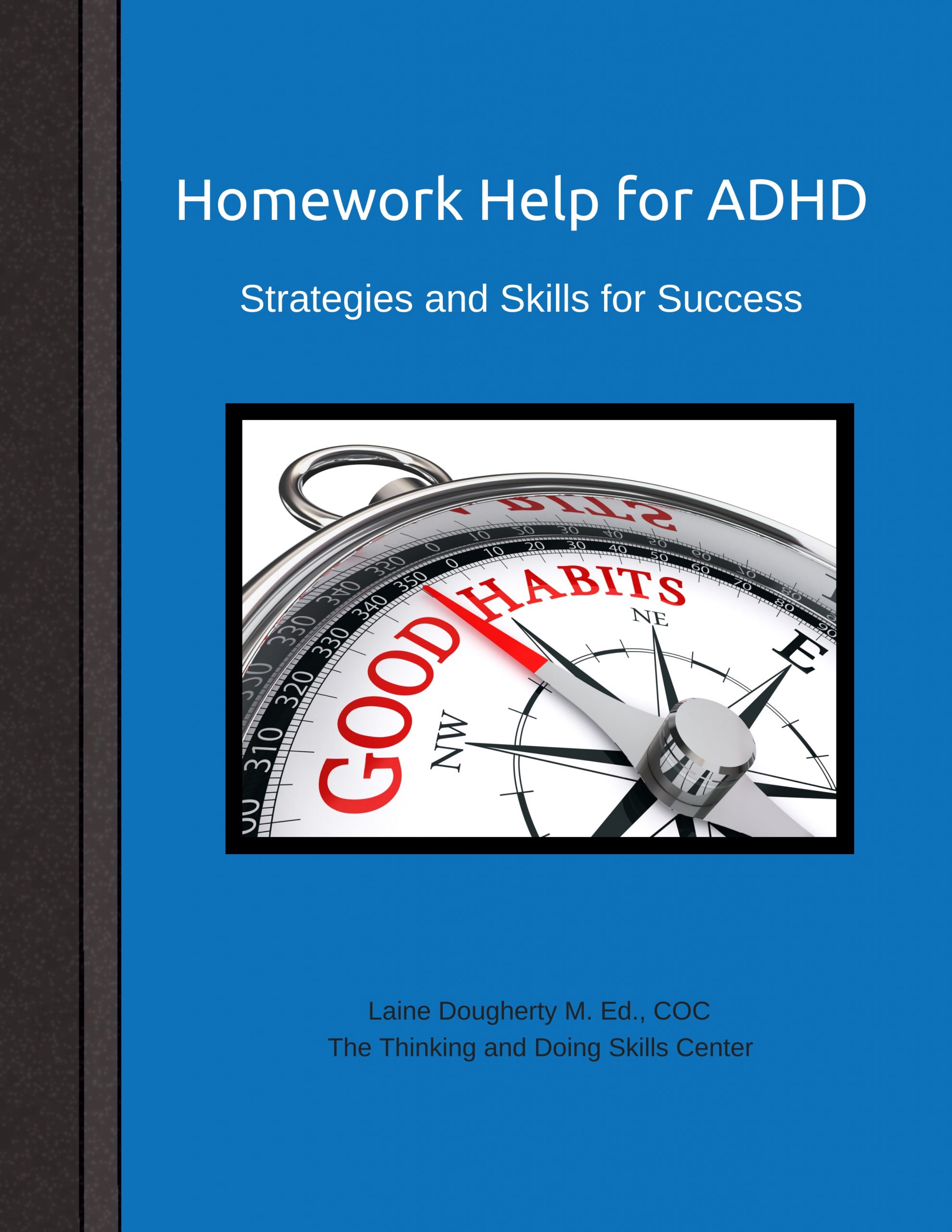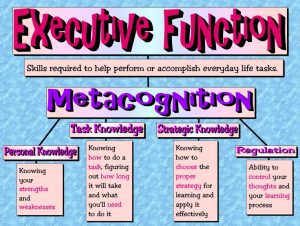 Have you ever looked up and wondered, what happened to the last hour? Or scrambled to get out the door realizing you will be late again, even though you had plenty of time to get ready? Well, you are not alone – it happens to a lot of people. It is called “time blindness” and it is related to how you sense or feel the passage of time.
Have you ever looked up and wondered, what happened to the last hour? Or scrambled to get out the door realizing you will be late again, even though you had plenty of time to get ready? Well, you are not alone – it happens to a lot of people. It is called “time blindness” and it is related to how you sense or feel the passage of time.
What is Time Blindness?
Time blindness is the brain’s struggle to appropriately sense, track and manage your actions based on a timeframe. It is a result of the chemistry of the brain and can interfere with your schedule, your priorities and your ability to get things done and/or meet deadlines. It may look like:
- Constantly underestimating or overestimating how long tasks take
- Feeling like there’s only “now” and “not now”
- Difficulty transitioning between tasks
- Forgetting future deadlines until they’re urgent
Why Does It Happen?
Most likely it is an executive function skill that develops in the prefrontal cortex and not something you can control. You can however, try to figure out where you struggle the most.
Time estimation: Is it in estimating how long things will take, or how much time has passed? Being able to “feel” how long it has been can be a challenge.
Temporal foresight: Is about managing the time you have and figuring out when to start on that big project rather than waiting until the deadline is close? It is important to be able to plan out the steps and calculate how much time you will need (in a logical manner).
Working memory: Your working memory holds the information you need in the moment. It has a limited capacity and all it takes is one more thing to remember and you may lose the other 7 things you were holding onto.
Emotional dysregulation: When emotions are running the show, the last thing your brain is focused on, is the passage of time. You may end up making impulsive decisions, procrastinating or hyper-focusing on lesser priorities.
So, when you lose track of time; it’s your brain, not your willpower.
This can result in:
-
- Chronic lateness
- Last-minute scrambling
- Thinking you have time for that “one more thing”
- Trouble starting tasks or projects with long term deadlines – or not being able to break large projects into manageable steps and spreading the workload out over time.
- Struggling to plan ahead
- Under or overestimating how much time something will take
Strategies to Help:
1. Make Time Visible and Audible – use analog clocks rather than digital as they show the passage of time more clearly. Use visual timers like a time timer or a countdown app and set backup alarms or reminders on your phone for the time you need to leave. Don’t dismiss the alarm until you are actually leaving. Make sure there is a clock within view.
2. Break down time into Blocks – You can divide your day or your activities into blocks that focus on similar tasks rather than an ambiguous plan like “work all morning.” Adults can really only focus for 90 minutes at a time (unless they are hyper-focusing), so make sure your blocks are a manageable size.
Try:
-
- 25-min Pomodoro sessions with 5-minute breaks in between
- 10-15-minute “power sprints” where you work until the timer goes off and then can switch to something else….unless you want to continue.
- Build-in transition time so your brain has time to process the finished task before starting something new.
3. Anchor Your Actions – also known as habit stacking. Habit stacking is where you attach a new task or habit onto an already existing habit. Make sure it is something you already do regularly without having to think about it, so you can add the new task/habit onto it. For example: “After I finish breakfast, I will check my planner and priorities.”
4. Check Your Reality – Think about the tasks you do regularly and estimate how long you think they take. Time yourself and compare your estimate with the reality. Were you close, or way off? Save this information for when you need to meet a deadline.
5. Work Backward from the Deadline – A deadline, whether it is for a project or an appointment has several details that need to be broken down into their manageable (single task) format before you can estimate when to start the process. For example: If you have an appointment at a specific time, you will need to think about everything you have to do to be ready for it, including what time to leave to be on time. By breaking the big task (arrive on time for appointment) into smaller actions you will need to work backwards. Start with the appointment, now how long will it take to get there? That’s the time you need to leave. What needs to be done before you leave? Do you need to eat, or get dressed or put your work away? By working backwards, you can subtract the times for each step until you have the time you need to do the first thing. Often times we think, it should only take 15 minutes to get there. But in reality, that’s with no traffic or red lights and you forgot to add in finding a parking space and walking to the appointment. Adding a few extra minutes for a contingency plan may save you some stress of hurrying and provide a few minutes of scrolling time.
If you struggle with time, then try these strategies or create your own to support you rather than thinking there is nothing you can do about it. If you’d like some coaching around this topic, our 4 week, 45-minute session, ½ price special begins in July 2025. Find out more: https://square.link/u/LVY4DSS1 or email me: laine@thinkinganddoingskillscenter.com
Coaching Prompt:
“When was the last time I ran out of time—or underestimated how long something would take? What systems might help me next time?”






 The simple answer is NO! Homework does NOT have to be a battle.
The simple answer is NO! Homework does NOT have to be a battle. October is ADHD Awareness/Empowerment Month. Each year the media, and the three national ADHD organizations, provide information on the latest scientific research to publicize and educate. The myths and misinformation continue to interfere with individuals seeking or getting help but, these three organizations are trying to help
October is ADHD Awareness/Empowerment Month. Each year the media, and the three national ADHD organizations, provide information on the latest scientific research to publicize and educate. The myths and misinformation continue to interfere with individuals seeking or getting help but, these three organizations are trying to help  Hey Mom/Dad (or Parent),
Hey Mom/Dad (or Parent), Summer is coming – that’s the good news! We want to enjoy the summer but with graduations, weddings and bbqs happening every weekend, things can get ahead of us because we don’t have the time but we also don’t want to use what little time we do have on decluttering, so things can pile up- that’s the bad news.
Summer is coming – that’s the good news! We want to enjoy the summer but with graduations, weddings and bbqs happening every weekend, things can get ahead of us because we don’t have the time but we also don’t want to use what little time we do have on decluttering, so things can pile up- that’s the bad news. We all want our children to grow up to be responsible, successful members of society. Isn’t that what you want for your child? So, we “help” them at every turn so that they can make it to school on time, complete their homework perfectly, and get good grades.
We all want our children to grow up to be responsible, successful members of society. Isn’t that what you want for your child? So, we “help” them at every turn so that they can make it to school on time, complete their homework perfectly, and get good grades. January 1st is meant to encourage thoughts of possibilities but it can also be a reminder of the previous year’s disappointments. For 2024, let’s make a deal, there’s enough negativity in the world, let’s focus on the positive this year. Are you in?
January 1st is meant to encourage thoughts of possibilities but it can also be a reminder of the previous year’s disappointments. For 2024, let’s make a deal, there’s enough negativity in the world, let’s focus on the positive this year. Are you in? ADHD, is it a superpower or kryptonite at home or at school? The truth is, it is probably both depending on the situation. All students want to learn, they often feel a great deal of pressure to “learn” and be able to show that learning when it is called for. How can you help your child learn to use their ADHD as a superpower and minimize the effects of kryptonite? Here are three ways to ensure better outcomes.
ADHD, is it a superpower or kryptonite at home or at school? The truth is, it is probably both depending on the situation. All students want to learn, they often feel a great deal of pressure to “learn” and be able to show that learning when it is called for. How can you help your child learn to use their ADHD as a superpower and minimize the effects of kryptonite? Here are three ways to ensure better outcomes. Teachers talk about the summer slide all the time. That downhill slope that learning often takes during the summer months. We all lose some level of skill when we don’t keep using it. For students, the summer slide can set them back a month or more having to review what they have already learned.
Teachers talk about the summer slide all the time. That downhill slope that learning often takes during the summer months. We all lose some level of skill when we don’t keep using it. For students, the summer slide can set them back a month or more having to review what they have already learned.